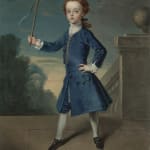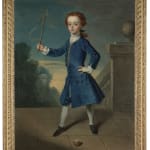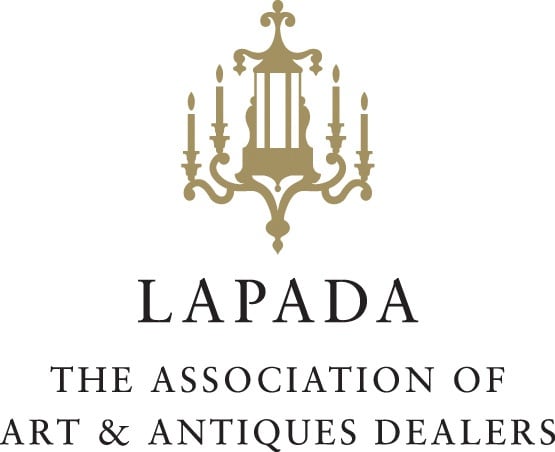Philippe Mercier was born in Berlin, the son of a French huguenot tapestry weaver at the Royal factory. He studied in Berlin at the Akademie der Künste and under Antoine Pesne, who from 1711 was court painter to Frederick I of Prussia, whose brother-in-law, George, elector of Hanover, became king of England (as George I) in 1714. It was probably in 1716 that, 'recommended from the Court at Hanover' (Vertue, Note books, 3.37), Mercier went to London, bringing a portrait of Frederick, the little grandson of George I.
In the early 1720's Mercier's work was dominated by the influence of Watteau, with whose work he was clearly intimately acquainted and he was an important figure in the introduction of French taste in English painting. He etched a number of Watteau's works and painted variations on the theme of the fête-champêtre with either commedia dell'arte figures or English family groups of loyal Hanoverian courtiers. Such groups, of which there are fine examples at Belton House, Lincolnshire, and in the Tate collection, launched the conversation piece in British painting. Mercier was also active at this time as a picture dealer, selling a number of paintings ‘collected abroad’ (Cock's, 21 April 1724).
On becoming Prince of Wales, Frederick commissioned Mercier to paint a series of whole-length portraits of the prince and his three sisters, the princesses Anne, Amelia, and Caroline (Shire Hall, Hertford), all four being engraved by John Simon, who described them as painted in 1728. They presumably brought about Mercier's appointments in 1729 as the prince's principal painter (on 17 February) and page of the bedchamber (on 6 March). On 26 January 1730 he was also made library keeper. In addition he shared with the prince an interest in the theatre; in 1729 they collaborated in a production of Thomas Doggett's Hob at Richmond, and in 1733 Mercier was a shareholder in Rich's Theatre at Covent Garden, London. His informal portrait of Handel (c.1730, priv. coll.) further suggests his interest in the performing arts. He painted more portraits of the prince in 1730 (priv. coll.) and about 1736 (National Portrait Gallery, London), and in 1733 he painted an informal musical group of the prince with his three sisters (versions in the Royal Collection; National Portrait Gallery, London; and Cliveden, Buckinghamshire). Mercier's association with the Royal Family continued when he was appointed as drawing master to the young princesses.
In 1737 he retired from Court life and moved to York in 1739, where he stayed for thirteen years, becoming immensely popular with the local gentry. Mercier visited Ireland in 1747 and Edinburgh in 1750, but in 1751 he let his house in York and returned to London. In 1752 he went to Portugal, where he was joined by his family. It is not known how long he stayed, but one of his last portraits, of the Burton family of London (Musée du Louvre, Paris), may be dated to about 1755.






